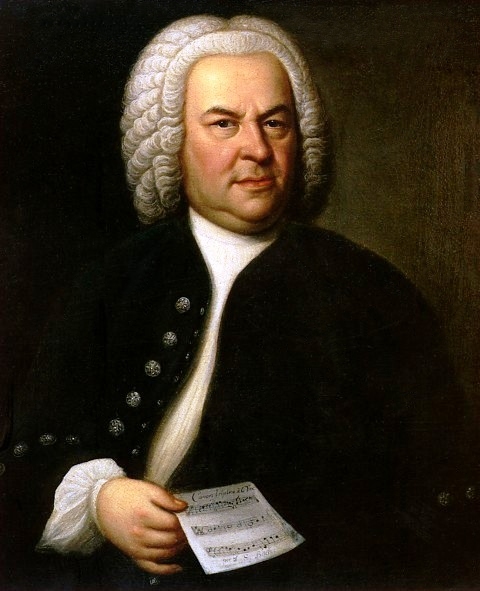Johann Sebastian Bach
Born March 31, 1685 in Eisenach, Germany.
Died July 28, 1750 in Leipzig, Germany.

Gloria sei dir gesungen from Cantata BWV 140, Wachet Auf! ruft uns die Stimme.
First (and only) Performance: November 25, 1731 at the Nikolaikirche, Leipzig.
Instrumentation: Soprano, Tenor, Bass soloists, SATB choir, and orchestra: 2 oboes, English horn, violins I (solo violino piccolo in final movement), violins II, violas, basso continuo (violoncello, double bass, harpsichord/organ).
One of Bach’s many duties in Leipzig was to compose cantatas. He produced works not just for the important days such as Easter, but also for ordinary Sundays such as the 27th Sunday after Trinity. The number of Sundays after Trinity varies between 22 and 27 since Easter falls on different dates each year. Given such a limited number of 27th Sundays, this cantata was rarely performed. We know that the first performance was not at St. Thomas, but at Bach’s “other” church – the Nikolaikirche – in Leipzig on November 25, 1731. There is no record that Bach led other performances of this cantata.
The gospel for that Sunday is the parable of the ten virgins, Matthew 25:1-13, in which Christ is represented as a bridegroom (as in the Matthäus-Passion). The virgins sleep as they await his arrival. At midnight they are awakened by a cry from the watchmen: “Wachet auf! (Sleepers, awake!)”
Bach chose a well-known hymn written by Philipp Nicolai in 1598. This hymn appears as a cantus firmus in many of the cantata’s movements. There are seven movements in the cantata. There is an opening chorus which features the hymn sung by the sopranos over a moving “dotted” accompaniment. This is followed by a tenor recitative. The third movement, Wann Kommst Du, is a lovely duet between the soprano and bass soloists that bears a remarkable resemblance to the famous Erbarme Dich aria. Then we hear the justly famous fourth movement, the chorale “Zion hört die Wächter singen” (Zion hears the watchmen calling). There is another recitative, this time by the bass soloist, followed by a soprano/bass duet before the final chorus.
Tonight, we will hear the final chorus Gloria sei dir gesungen. Bach elevates the four-part harmonization of the hymn by infusing the setting with symbolism. For example, the bass setting of “the gates are made of twelve pearls” consists of twelve notes. As expected, the hymn tune is sung by the sopranos, but the tune is also played by a solo violino piccolo an octave higher symbolizing heavenly Freude.
Resources
Public domain score hosted at IMSLP
[amazon template=iframe image&asin=3795767695][amazon template=iframe image&asin=1932419136]
[amazon template=iframe image&asin=B00004XPU6][amazon template=iframe image&asin=B002K9C0RK][amazon template=iframe image&asin=B000000SLU]